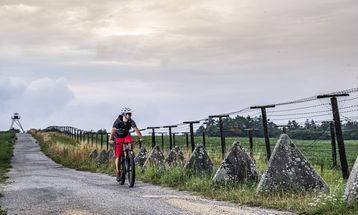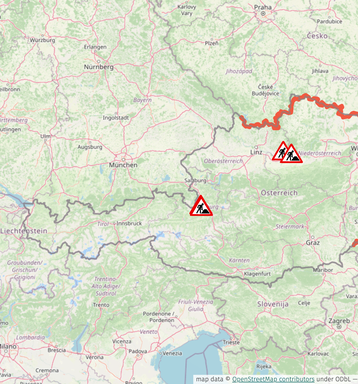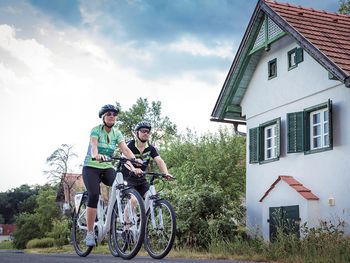Consent required
To load this feature, we need your consent. Please open the cookie settings and enable "External Services & Content".
On EuroVelo 13, along Austria’s border with the Czech Republic, Slovakia, and Hungary, experience the history of Europe’s former East-West division. Though historically fascinating and naturally beautiful, the route’s hilly terrain requires good physical fitness.


To load this feature, we need your consent. Please open the cookie settings and enable "External Services & Content".
Until 1989 the Iron Curtain divided Europe nearly 40 years into east and west. The inhabitants of a wide stripe along the border were resettled so that crossing the border became nearly impossible. Nature took this opportunity to recover and rare animals and species found a new habitat - the closed off territorry turned into a „green belt“.

Coming from the Bavarian-Czech border, you can visit the Zisterzienser monestary in Vyssi Brod (CZ), the „green belt museum“ in Leopoldschlag as well as the „Green belt Center“ in Windhaag, Upper Austria. Further highlights along the route are the health resort Harbach, the historic Kuenringer town Weitra with its small brewery and exhibition „Iron curtain“ in the castle, the outdoor museum „Iron Curtain“ at the border of Kadolec/Nove Hrady, the Renaissance town Slavonice, Hardegg- Austrias smallest „town“ with only 81 inhabitants - as well as the crossborder national park „Thayatal".
As next stops we recommend the bunkers and remains of the iron curtain at Satov (CZ), the historic wine town of Retz with its underground labyrinth and Laa an der Thaya with its historic center and modern Spa. You continue passing the wine cellars at Galgenbergto Mikulov with its castle and nearby monument „gate of freedom“ at Sedlec. The route continues through the UNESCO cultivated landscape at Lednice (CZ) and Valtice with its Iron Curtain-Museum.
Finally you reach one of central Europes most interesting wetlands, the March/Thaya-floodplain on the Slovak side from Hohenau to Devinska Nova Vez, where you can admire the most spectacular „Freedom Bridge“ along the whole EuroVelo 13 at Schloss Hof, the second largest baroque castle of the Austrian-Hungarian Monarchy. Back on the Slovak side you cycle via Devin ruin Theben where the rivers March and Donau join and a ferry connects to Hainburg, only a few more kilometres to Bratislava, the capital of Slovakia. Alternatively, you can choose the Austrian parallel route between Hohenau and Schloss Hof.
From Bratislava you cycle along the border on a (mostly) EuroVelo 13-signposted trail until the historic bridge of March and Donau continue to Neusiedler lake, the historic town Sopron (former Ödenburg), southbound to Lutzmannsburg (thermal spa) and Szentgotthard (HU), where you finally leave Austria.


To load this feature, we need your consent. Please open the cookie settings and enable "External Services & Content".

Experience 200 km of Iron Curtain history in the Waldviertel region along EuroVelo 13—from the Barents Sea to the Black Sea.

Cycle Burgenland north to south along Iron Curtain Trail—experience wine country, sunny days, and rich nature!

Cycle along the Danube route through Austria, from Passau in Germany to Bratislava in Slovakia, past scenic rivers and vibrant cities.
Explore More
Ride along Alpine rivers, through Linz, Salzburg, and nature reserves, crossing the Alps with a unique train shuttle!
Explore More
Discover vineyards, castles, thermal baths, and culinary highlights in Lower Austria, Vienna, and Styria on this scenic route.
Explore More
Enjoy Austria’s diverse landscapes by combining well-developed cycling paths on this picturesque tour.
Explore More
Explore the river landscape of the Alpine Rhine, the riparian forests of the Old Rhine and the biodiverse natural paradise of the Rhine Delta.
Explore More